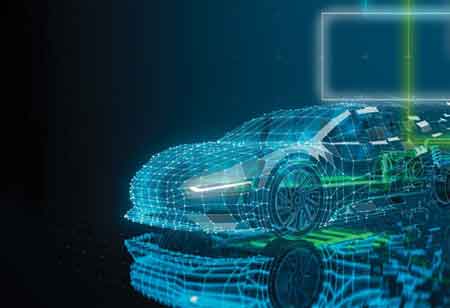THANK YOU FOR SUBSCRIBING
THANK YOU FOR SUBSCRIBING
Be first to read the latest tech news, Industry Leader's Insights, and CIO interviews of medium and large enterprises exclusively from Auto Tech Outlook

By
Auto Tech Outlook | Tuesday, June 24, 2025
Stay ahead of the industry with exclusive feature stories on the top companies, expert insights and the latest news delivered straight to your inbox. Subscribe today.
Fremont, CA: Within the tranquil environment of a factory characterized by robust steel structures, a transformative revolution is redefining automotive manufacturing. Once heavily reliant on human labor and mechanical processes, the industry has integrated advanced systems where machines can think, learn, and respond.
Industry 4.0 is pivotal in this evolution, introducing unprecedented intelligence, connectivity, and efficiency to the production floor, thus moving beyond buzzword status. This new era of manufacturing, marked by the convergence of digital and physical realms, is facilitating the assembly of vehicles with precision while emphasizing the importance of foresight and adaptability in their design and development.
Automation and Robots on the Manufacturing Line
At the core of this change are robotics and automation. These technologies have graduated from programmable mechanics to intelligent systems able to carry out highly complex tasks with fantastic precision. Collaborative robotic arms work hand in hand with a human operator, boosting productivity with constant quality. Embedded sensors within the production equipment enable error reduction by real-time monitoring, reducing cessation terms in production. As the tasks get more convoluted and the vehicles more complex, automation guarantees that manufacturing will offer scalable operations and will create responsive change.
Role of Data and Analytics
Data is one of the most treasured assets in the automotive manufacturing business. It holds information on virtually every component, machine, and process. Such vast amounts of information enable manufacturers to find inefficiencies through advanced analytics and machine learning, forecast maintenance requirements for rapid response, and optimize processes along the supply chain.
The capability for real-time data analysis offers decision-makers insights that were hitherto not visible, leading to being proactive rather than reactive. So, the movement from traditional reporting to predictive intelligence has given birth to a new level of operational effectiveness and cost containment.
One of the most disruptive applications of Industry 4.0 must be the digital twin, a virtual representation of physical systems. These models provide a framework for engineers to simulate the performance of an entire factory or single vehicle components under varying conditions.
Manufacturers can avoid costly mistakes and unnecessary delays by using simulation in surrounding validation processes before any physical implementation. The simulation further supports rapid prototyping to shorten the time frame for new designs to life. As vehicles have increasingly advanced technologies, it will help ensure that the fusion of software, electronics, and mechanics goes smoothly.
Connectivity and IIoT
A fundamental component of Industry 4.0 is the IIoT. Machines and systems are interconnected in contemporary manufacturing environments, enabling seamless communication through high-speed networks. This facilitates unobstructed data exchange across various departments, ensuring that every aspect of the production ecosystem operates synchronously, from raw materials to final assembly.
Smart factories equipped with IIoT capabilities enhance their production efficiency by adjusting to fluctuations in demand, detecting potential issues before they escalate, and resolving challenges while maintaining ongoing production.
As the automotive industry embraces digital transformation, the concept of the factory of the future is increasingly becoming a tangible reality. Industry 4.0 improves production processes and establishes new paradigms for design, efficiency, and innovation. With the implementation of advanced sensors and automated decision-making, the future of manufacturing is poised to be more intelligent, sustainable, and equipped to meet the demands of next-generation vehicles.
 Copyright © 2025 AutoTech Outlook. All Rights Reserved | Privacy Policy | Subscribe | Sitemap | About us | Feedback Policy | Editorial Policy
Copyright © 2025 AutoTech Outlook. All Rights Reserved | Privacy Policy | Subscribe | Sitemap | About us | Feedback Policy | Editorial Policy 



